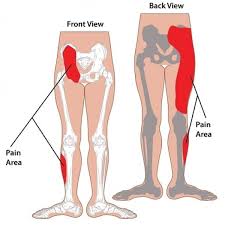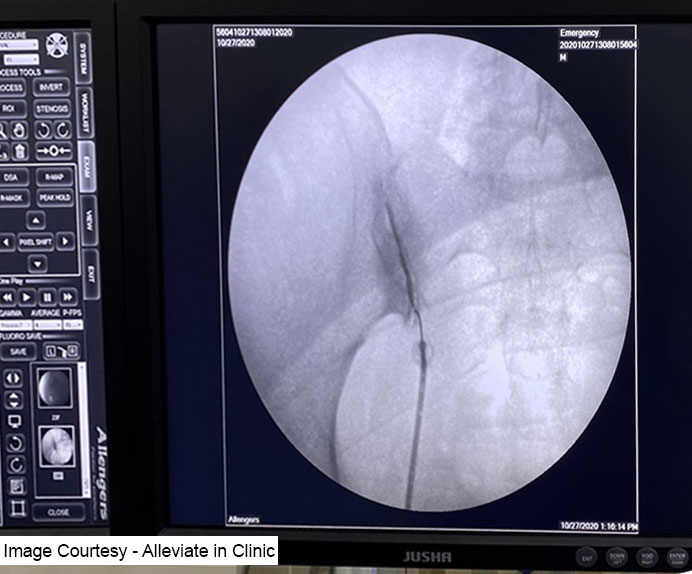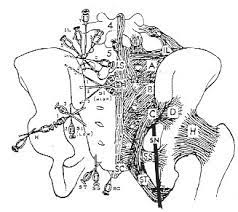
Introduction
Sacroiliac joint pain can be debilitating, affecting mobility and quality of life for individuals. While there are various treatment options available, the combination of image-guided Platelet Rich Plasma (PRP) therapy with prolotherapy has emerged as a promising approach in managing SI joint degeneration and inflammation. In this blog, we delve into the intricacies of these treatments, their efficacy, and the multidisciplinary approach that can optimize outcomes for patients suffering from SI joint dysfunction.
Understanding Sacroiliac Joint Pain

Sacroiliac joint pain radiation pattern
The sacroiliac joint, located in the pelvis, connects the sacrum (the triangular bone at the base of the spine) to the ilium (the largest bone of the pelvis). It plays a crucial role in supporting the upper body and transferring weight from the spine to the lower body. Sacroiliac joint pain can result from various factors including degeneration, inflammation, trauma, or biomechanical dysfunction.
Understanding PRP Therapy
Fluoroscopy guided intrarticular Sacroiliac joint injection
Platelet Rich Plasma (PRP) therapy has emerged as a promising treatment option for sacroiliac (SI) joint pain, offering a non-surgical and minimally invasive approach to manage inflammation and promote healing. SI joint pain, characterized by discomfort and dysfunction in the pelvic region, can significantly impact mobility and quality of life. Here, we delve deeper into PRP therapy for SI joint pain, exploring its mechanisms, efficacy, and clinical applications.
PRP therapy harnesses the regenerative potential of platelets, which are rich in growth factors, cytokines, and other bioactive proteins essential for tissue repair and regeneration. The procedure involves isolating and concentrating platelets from the patient’s own blood sample through a process of centrifugation. The resulting PRP solution is then injected directly into the affected SI joint under image guidance for precise delivery.
Mechanisms of Action
PRP therapy exerts its therapeutic effects through multiple mechanisms
- Anti-inflammatory Properties: Platelets release anti-inflammatory cytokines that help reduce inflammation within the SI joint, alleviating pain and discomfort.
- Tissue Regeneration: Growth factors present in PRP stimulate cellular proliferation and tissue repair processes, promoting the regeneration of damaged ligaments, tendons, and cartilage within the SI joint.
- Pain Modulation: PRP therapy may modulate pain perception by inhibiting pain signaling pathways and promoting the release of endogenous analgesic substances.
Advantages of PRP Therapy for SI Joint Pain
- Minimally Invasive: PRP therapy is minimally invasive and can be performed on an outpatient basis, minimizing downtime and recovery periods for patients.
- Autologous Treatment: PRP is derived from the patient’s own blood, reducing the risk of adverse reactions or immune responses associated with allogeneic therapies.
- Low Risk Profile: PRP therapy has a favorable safety profile, with minimal reported side effects or complications.
Understanding Prolotherapy
Prolotherapy treatment areas with the main focus being sacroiliac land lumbar ligaments
Prolotherapy involves the injection of a proliferative solution, typically containing dextrose or other irritants, into the affected ligaments and tendons surrounding the SI joint. The goal of prolotherapy is to induce a controlled inflammatory response, triggering the body’s natural healing mechanisms and promoting tissue repair and regeneration.
Mechanisms of Action
Prolotherapy exerts its therapeutic effects through several mechanisms
- Stimulation of Collagen Production: The proliferative solution injected during prolotherapy stimulates fibroblast activity, leading to increased collagen synthesis and the formation of new connective tissue fibers. This strengthens and stabilizes the ligaments and tendons supporting the SI joint.
- Reduction of Joint Instability: SI joint pain often results from ligament laxity or weakness, leading to joint instability and abnormal movement patterns. Prolotherapy helps restore ligament integrity and improve joint stability, reducing pain and dysfunction.
- Modulation of Pain Pathways: Prolotherapy may modulate pain perception by disrupting nociceptive signaling pathways and promoting the release of endogenous analgesic substances, such as endorphins and enkephalins.
Advantages of Prolotherapy for SI Joint Pain
- Non-Surgical Approach: Prolotherapy offers a non-surgical alternative for patients with SI joint pain, avoiding the risks and recovery associated with invasive procedures.
- Minimal Side Effects: Prolotherapy has a low risk of adverse effects compared to surgery or long-term medication use, making it a relatively safe treatment option for many patients.
- Regenerative Potential: Prolotherapy promotes tissue regeneration and repair, addressing the underlying cause of SI joint pain and supporting long-term joint health and function.
The Combined Approach at Alleviate Pain Clinic
At Alleviate Pain Clinic, we adopt a multidisciplinary approach to sacroiliac joint pain management, combining PRP therapy with prolotherapy and comprehensive rehabilitation strategies. Our treatment protocol involves:
- Diagnostic Assessment: Thorough evaluation and diagnostic imaging to identify the underlying cause and severity of sacroiliac joint dysfunction.
- PRP Injection: Precise administration of PRP into the affected sacroiliac joint to target inflammation and promote tissue regeneration.
- Prolotherapy Sessions: Strategic injections to strengthen weakened ligaments and enhance joint stability, reducing pain and preventing further injury.
- Physical Therapy: Customized exercise programs focusing on core stability, flexibility, and biomechanical alignment to support optimal joint function and mobility.
- Strength and Conditioning: Targeted strengthening exercises to improve muscular support around the sacroiliac joint, reducing stress and enhancing overall joint stability.
- Clinical Nutrition: Nutritional counseling to support tissue repair and optimize healing, emphasizing anti-inflammatory foods and supplements that promote joint health.
- Clinical Psychology: Psychological support and coping strategies to help patients manage pain, reduce stress, and improve overall emotional well-being.
Conclusion
Sacroiliac joint pain can be debilitating, but with advancements in regenerative medicine and comprehensive treatment approaches, patients have access to effective alternatives beyond conventional therapies. Platelet Rich Plasma (PRP) with prolotherapy offers a promising solution for addressing inflammation and instability associated with sacroiliac joint dysfunction. At Alleviate Pain Clinic, our integrated approach combines PRP therapy, prolotherapy, and multidisciplinary rehabilitation strategies to help patients regain function, alleviate pain, and improve their quality of life.





